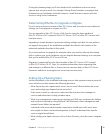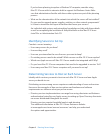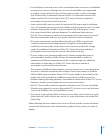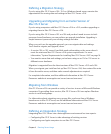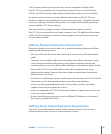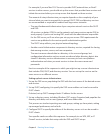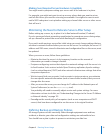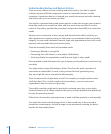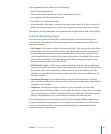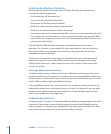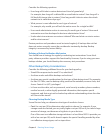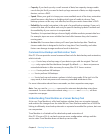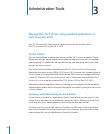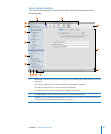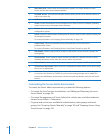
Chapter 2 Planning Server Usage 33
Your organization must determine the following:
What must be backed up? Â
What should not be backed up (as per organization policy)? Â
How granular are the restoration needs? Â
How often is the data backed up? Â
How accessible is the data: in other words, how much time will it take to restore it? Â
What processes are in place to recover from a disaster during a backup or restore? Â
The answers to these questions are an integral part of your backup and restore policy.
Understanding Backup Types
There are many types of backup les (explained below), and within each type are
many formats and methods. Each backup type serves a unique purpose and has its
own considerations.
 Full Images: Full images are byte-level copies of data. They capture the state of the
hard disk down to the most basic storage unit. These backups also keep copies of
the disk lesystem and the unused or erased portion of the disk in question.They
can be used for forensic study of the source disk medium. Such detail often makes
le restoration unwieldy. Full Image backups are often compressed and are only
decompressed to restore the entire le set.
 Full File-level Copies: Full le-level copies are backups that are kept as duplicates.
They do not capture the nest detail of unused portions of the source disk, but they
do provide a full record of the les as they existed at the time of backup. If a le
changes, the next full le-level backup copies the entire data set in addition to the
le that changed.
 Incremental Backups: Incremental backups start with le-level copies, but they
only copy les changed since the last backup. This saves storage space and captures
changes as they happen.
 Snapshots: Snapshots are copies of data as it was in the past. You can make
snapshots from collections of les, or more often from links to other les in a backup
le set. Snapshots are useful for making backups of volatile data (data that changes
quickly), like databases in use or mail servers sending and receiving mail.
These backup types are not mutually exclusive. They exemplify dierent approaches
to copying data for backup purposes. For example, Time Machine uses a full le-level
copy as a base backup; then it uses incremental backups to create snapshots of a
computer’s data on a given day.



